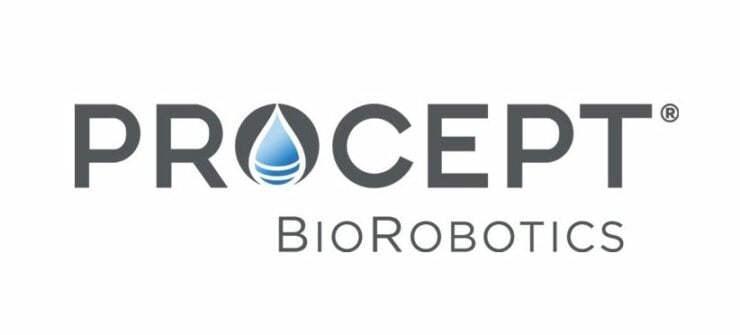PROCEPT BioRobotics® Corporation has announced long-term, real-world data showcasing the benefits of Aquablation therapy for the treatment of symptomatic benign prostatic hyperplasia (BPH) at both academic and commercial settings. The results were presented this past weekend at the American Urological Association (AUA) Annual Meeting in San Antonio, Texas.
“The data presented at AUA confirm the safety and long-term durability of Aquablation therapy in treating men with symptomatic benign prostatic hyperplasia, regardless of prostate size or shape,” said Reza Zadno, CEO of PROCEPT BioRobotics. “The fact that 12 abstracts were presented this past weekend underscores the growing body of real-world evidence to support that Aquablation therapy delivers the highest standard in urological care.”
Icahn School of Medicine at Mount Sinai – 4-Year Outcomes
Aquablation therapy was performed on 275 adult men with moderate to severe BPH with a prostate volume between 38 and 293 mL (mean volume of 108.3 mL). The patients were out to 4 years post-procedure.
Key results:
- Mean prostate volume decreased from 108.3 mL to 66.2 mL (-38.9%).
- International Prostate Symptom Score (IPSS) improved from 24.2 at baseline to 7.1 at 4 years.
- Peak urinary flow rate (Qmax) increased nearly 3-fold from 6.1 mL/sec to 17.1 mL/sec.
- Antegrade ejaculation was preserved for 99% of men.
- Surgical retreatment occurred in 1.8% patients.
“BPH is a condition that impacts the majority of men as they age, but treatment options have not historically found the balance between alleviating symptoms from enlarged prostates while preserving sexual function and urinary continence. While there have been studies demonstrating the durable efficacy and safety profile of Aquablation therapy for the treatment of BPH, this is the largest academic single-center experience demonstrating long-term performance in BPH management,” said Dr. Steven Kaplan, Icahn School of Medicine at Mount Sinai.
Potomac Urology – Aquablation Case Series of 812 Consecutive Men with LUTS due to BPH
Three surgeons at Potomac Urology collected data on 812 consecutive men treated with Aquablation therapy. Routine procedural characteristics, adverse events, symptom scores and uroflow were collected over 3 years. The data showed that safety has been improved and efficacy was consistent against FDA clinical trials. Day case Aquablation therapy has also been shown to be a viable option.
Key results:
- Mean age, IPSS, Qmax and prostate volume were 69 ± 8, 21 ± 7, 11 ± 6, and 77 ml (range 22-263 ml), respectively.
- IPSS at 8, 12, 24 and 36 months was 7 or less.
- 14% of patients were in preoperative retention with 94% of those patients passing their trial of voids.
- Secondary intervention due to recurrent LUTS was 1.6%.
“Aquablation therapy strikes the ideal balance of providing the efficacy and durability of a resective procedure while providing the safety and tolerability of a minimally invasive procedure. We have treated more than 800 men with Aquablation therapy and feel that the results truly speak for themselves,” said Shawn Marhamati, MD, MS, at Potomac Urology.
Additional abstract highlights include:
- MP20-01: WATER vs WATER II 5-Year Update: Comparing Aquablation Therapy for Benign Prostatic Hyperplasia in 30-80 cc and 80-150 cc Prostates
Mohamad Baker Berjaoui, MD
University of Toronto
This study presented the final analysis comparing clinical trial outcomes of Aquablation to TURP for the treatment of lower urinary tract symptoms (LUTS) in small-to-moderate prostates (WATER study: NCT02505919) to those in large prostates (WATER II: NCT03123250) at five-year follow-up. The final analysis of the two, prospective clinical trials demonstrated that Aquablation therapy has durable outcomes and low retreatment rates for the treatment of LUTS/BPH independently of prostate volume between 30-150 ml prostates. - MP: 20-03: Aquablation Real-World Prostate Size Utilization and Reported Bleeding Events Across 5 Years
Dean Elterman, MD, MSc, FRCSC
University of Toronto
While clinical studies in the past have evaluated Aquablation therapy’s application in glands between 30-150 mL, this study sought to evaluate how the technology is used in the real-world setting. 31,944 procedures were evaluated from 2019-2023 in patients across Asia, Europe and North America. Aquablation showed a consistent adoption in use across a broad range prostates sizes over five years with a very low risk of bleeding. - MP20-05: Day Case Aquablation: First Published Experience Report in an Ambulatory Surgical Center (ASC)
Kevin C. Zorn, MD, FACS, FRCSC
BPH Canada Prostate Surgery Institute
The study investigated the feasibility, safety and efficacy of same day discharge (SDD) after Aquablation specifically in an ASC. Results showed that same day discharge after Aquablation therapy for BPH at an ASC appears to be a safe and effective approach, yielding favorable outcomes in terms of symptom relief and patient satisfaction.










